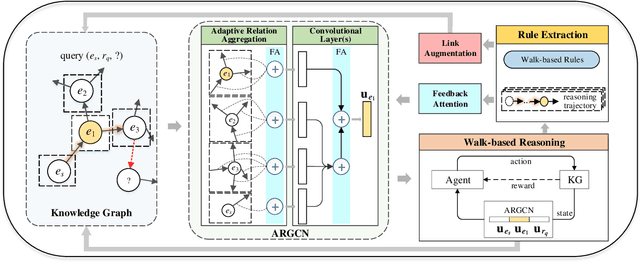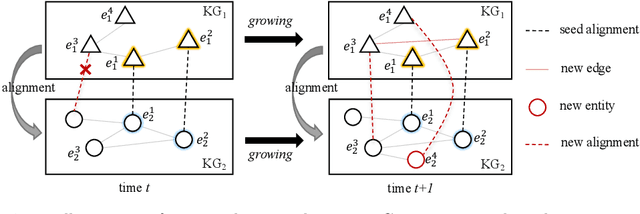Kexin Han
Test-Time Code-Switching for Cross-lingual Aspect Sentiment Triplet Extraction
Jan 24, 2025Abstract:Aspect Sentiment Triplet Extraction (ASTE) is a thriving research area with impressive outcomes being achieved on high-resource languages. However, the application of cross-lingual transfer to the ASTE task has been relatively unexplored, and current code-switching methods still suffer from term boundary detection issues and out-of-dictionary problems. In this study, we introduce a novel Test-Time Code-SWitching (TT-CSW) framework, which bridges the gap between the bilingual training phase and the monolingual test-time prediction. During training, a generative model is developed based on bilingual code-switched training data and can produce bilingual ASTE triplets for bilingual inputs. In the testing stage, we employ an alignment-based code-switching technique for test-time augmentation. Extensive experiments on cross-lingual ASTE datasets validate the effectiveness of our proposed method. We achieve an average improvement of 3.7% in terms of weighted-averaged F1 in four datasets with different languages. Additionally, we set a benchmark using ChatGPT and GPT-4, and demonstrate that even smaller generative models fine-tuned with our proposed TT-CSW framework surpass ChatGPT and GPT-4 by 14.2% and 5.0% respectively.
Lifelong Embedding Learning and Transfer for Growing Knowledge Graphs
Nov 29, 2022Abstract:Existing knowledge graph (KG) embedding models have primarily focused on static KGs. However, real-world KGs do not remain static, but rather evolve and grow in tandem with the development of KG applications. Consequently, new facts and previously unseen entities and relations continually emerge, necessitating an embedding model that can quickly learn and transfer new knowledge through growth. Motivated by this, we delve into an expanding field of KG embedding in this paper, i.e., lifelong KG embedding. We consider knowledge transfer and retention of the learning on growing snapshots of a KG without having to learn embeddings from scratch. The proposed model includes a masked KG autoencoder for embedding learning and update, with an embedding transfer strategy to inject the learned knowledge into the new entity and relation embeddings, and an embedding regularization method to avoid catastrophic forgetting. To investigate the impacts of different aspects of KG growth, we construct four datasets to evaluate the performance of lifelong KG embedding. Experimental results show that the proposed model outperforms the state-of-the-art inductive and lifelong embedding baselines.
Inductive Knowledge Graph Reasoning for Multi-batch Emerging Entities
Aug 22, 2022



Abstract:Over the years, reasoning over knowledge graphs (KGs), which aims to infer new conclusions from known facts, has mostly focused on static KGs. The unceasing growth of knowledge in real life raises the necessity to enable the inductive reasoning ability on expanding KGs. Existing inductive work assumes that new entities all emerge once in a batch, which oversimplifies the real scenario that new entities continually appear. This study dives into a more realistic and challenging setting where new entities emerge in multiple batches. We propose a walk-based inductive reasoning model to tackle the new setting. Specifically, a graph convolutional network with adaptive relation aggregation is designed to encode and update entities using their neighboring relations. To capture the varying neighbor importance, we employ a query-aware feedback attention mechanism during the aggregation. Furthermore, to alleviate the sparse link problem of new entities, we propose a link augmentation strategy to add trustworthy facts into KGs. We construct three new datasets for simulating this multi-batch emergence scenario. The experimental results show that our proposed model outperforms state-of-the-art embedding-based, walk-based and rule-based models on inductive KG reasoning.
Facing Changes: Continual Entity Alignment for Growing Knowledge Graphs
Jul 23, 2022



Abstract:Entity alignment is a basic and vital technique in knowledge graph (KG) integration. Over the years, research on entity alignment has resided on the assumption that KGs are static, which neglects the nature of growth of real-world KGs. As KGs grow, previous alignment results face the need to be revisited while new entity alignment waits to be discovered. In this paper, we propose and dive into a realistic yet unexplored setting, referred to as continual entity alignment. To avoid retraining an entire model on the whole KGs whenever new entities and triples come, we present a continual alignment method for this task. It reconstructs an entity's representation based on entity adjacency, enabling it to generate embeddings for new entities quickly and inductively using their existing neighbors. It selects and replays partial pre-aligned entity pairs to train only parts of KGs while extracting trustworthy alignment for knowledge augmentation. As growing KGs inevitably contain non-matchable entities, different from previous works, the proposed method employs bidirectional nearest neighbor matching to find new entity alignment and update old alignment. Furthermore, we also construct new datasets by simulating the growth of multilingual DBpedia. Extensive experiments demonstrate that our continual alignment method is more effective than baselines based on retraining or inductive learning.
 Add to Chrome
Add to Chrome Add to Firefox
Add to Firefox Add to Edge
Add to Edge